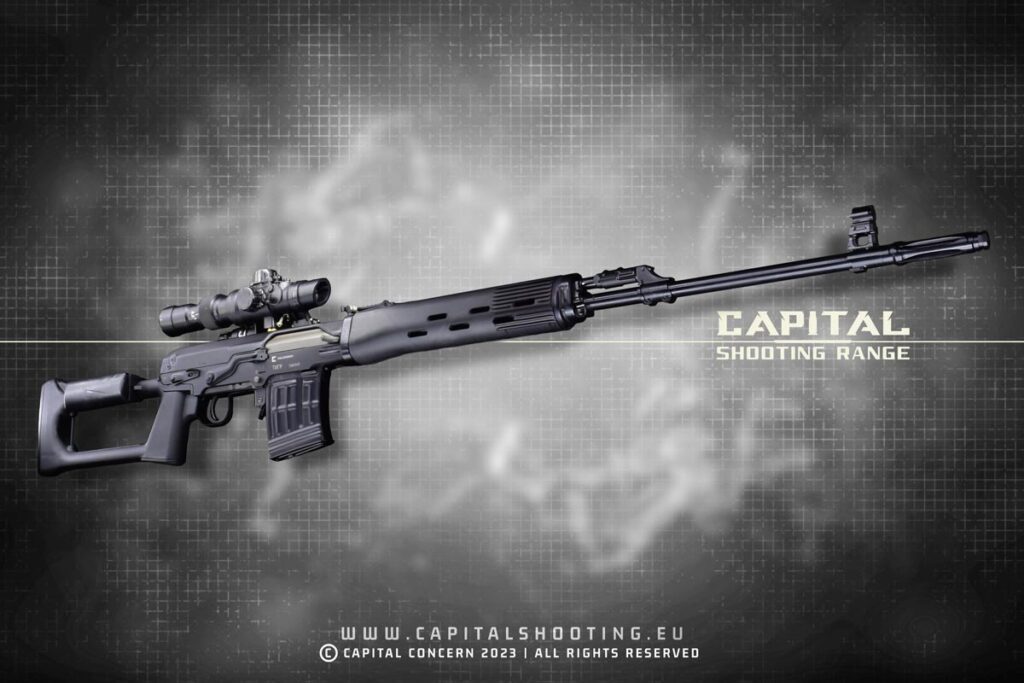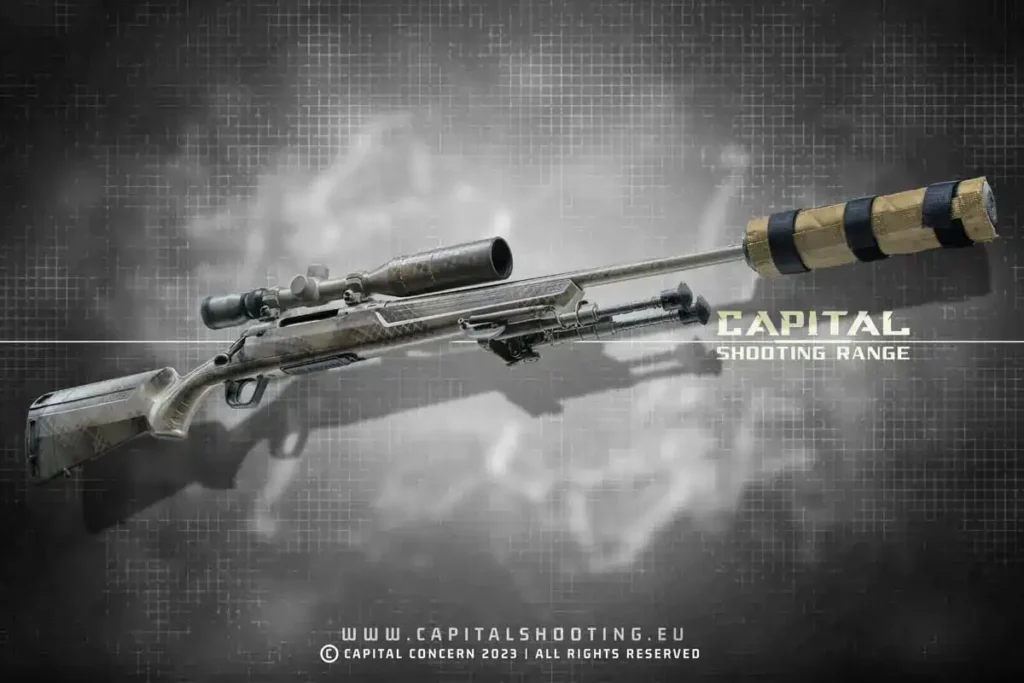The Karabiner 98 k: A Legendary German Military Bolt-Action Rifle
The Karabiner 98 k, commonly referred to as the Kar98 k or simply K98 k, is a renowned German military bolt-action rifle originally manufactured by Mauser. Notably, it served as the standard issue rifle for Nazi Germany’s armed forces during World War II. This iconic rifle is celebrated for its reliability, accuracy, and historical significance, making it a vital part of military history.
From the Past to the Present
The Kar98 k represents one of the final evolutions in the prolific Mauser Rifle Series. It built upon earlier models like the Kar98b and the Mauser Standard Modell, both of which trace their origins to the Gewehr 98. In 1935, the German military officially adopted the Kar98 k as its standard rifle. Consequently, this rifle quickly gained a reputation for its reliability, accuracy, and rugged construction. Over the course of World War II, Germany produced more than 14 million units, making the Kar98 k one of the most widely manufactured military rifles in history.
After World War II, vast quantities of Kar98 ks found their way into the hands of both the Soviet Union and the Western world, reaching allied states around the globe. Notably, the newly founded state of Israel received a significant number of these rifles and converted them to fire 7.62×51mm NATO cartridges. Today, the rifle’s enduring design continues to see action, alongside contemporaries like the Lee-Enfield and Mosin Nagant, remaining relevant on modern battlefields and among shooting enthusiasts worldwide.
Design Features
The design of the Kar98 k reflects the expertise of Mauser engineers and the advancements in firearm technology of its time. Key design features include:
- Bolt Action Mechanism: This design allows for precise control over each shot, providing excellent accuracy.
- Mauser’s Controlled Feed: This system ensures that cartridges feed positively from the magazine into the chamber, enhancing reliability.
- Iron Sights: Equipped with adjustable iron sights, the Kar98 k offers excellent visibility and targeting capabilities.
- Wooden Stock: The traditional wooden stock provides a sturdy and aesthetically pleasing construction, contributing to the rifle’s balance and handling.
- Bayonet Lug: Many models include a bayonet lug, allowing users to attach a bayonet for close-quarters combat.
Specifications
(1935 – 1945)
- Type: Battle Rifle
- Caliber: 7.92 x 57mm Mauser
- Weight: 8.2 lbs (3.7 kg) – 9 lbs (4.1 kg)
- Length: 43.7 in (111 cm)
- Barrel Length: 23.6 in (60 cm)
- Muzzle Velocity: 2,493 ft/s (760 m/s)
- Capacity: 5-round internal magazine, reloaded with stripper clips or individual rounds
- Fire Modes: Bolt-Action
Karabiner 98k “Kriegsmodell”
The Karabiner 98k “Kriegsmodell,” or “war model,” represented a late-war simplification to the standard Kar 98k. This model, often referred to as a “semi-Kriegsmodell,” incorporates several production simplifications. These include:
- Simplified Construction: The design features screw-retained barrel bands instead of the more complex original designs.
- Omission of Non-Essential Features: The design removes features like the bayonet lug and cleaning rod to streamline production.
- Bolt Disassembly Disc: This component remains in the buttstock for ease of maintenance.
Full-Kriegsmodell versions, which incorporate all simplification features, are rarer and were produced by only two factories (bnz and byf/svw).
Legacy of the Karabiner 98k
The legacy of the Karabiner 98k extends far beyond its use during World War II. Its design has influenced countless military and civilian firearms, thus setting standards for accuracy and reliability in bolt-action rifles. Many experts regard the Kar98k as a benchmark against which other military rifles are measured.
Today, collectors and historians value the Kar98k for its historical significance and craftsmanship. Many enthusiasts appreciate its role in shaping modern firearm design, and it remains a popular choice for precision shooting and military reenactments. Additionally, its historical presence in various conflicts has cemented its place as an iconic piece of military hardware.
Modern Use and Popularity
In contemporary times, the Kar98k continues to attract collectors, historians, and shooting enthusiasts alike. Despite the introduction of modern military rifles, the Kar98k’s performance and historical value keep it relevant. Enthusiasts frequently participate in shooting events and competitions, showcasing the Kar98k and emphasizing its continued effectiveness as a precision firearm.
Furthermore, the rifle’s design has led to various reproductions and modern adaptations. Consequently, new generations of shooters can experience this classic firearm. Some manufacturers produce .22 caliber versions of the Kar98k, enabling recreational shooting and training for younger shooters or those looking for a lighter option.
Maintenance and Care
Proper maintenance is crucial for preserving the performance and longevity of the Kar98k. Here are some essential tips for maintaining this historic rifle:
- Regular Cleaning: Clean the barrel and action after each use to prevent corrosion and ensure accuracy. Use a cleaning rod along with appropriate brushes and patches.
- Inspect for Damage: Regularly check for any signs of wear or damage to the stock, barrel, and action. Address any issues promptly to prevent further problems.
- Lubrication: Apply a light oil to moving parts to ensure smooth operation. However, avoid over-lubricating, as this can attract dirt and debris.
- Storage: Store the rifle in a cool, dry place, ideally in a protective case to prevent dust and moisture buildup.
Collecting the Kar98k
For collectors, the Kar98k offers a rewarding and enriching experience. Here are a few points to consider when collecting:
- Research: Familiarize yourself with different models, markings, and historical significance. Understanding the context can enhance your collection and appreciation.
- Condition: Pay close attention to the rifle’s condition, including the stock, metal finish, and bore. Original parts and unaltered configurations often have higher value among collectors.
- Documentation: Keep records of provenance, including any historical context, previous ownership, and documentation of modifications or repairs.
- Join Communities: Connect with fellow collectors and enthusiasts through forums, clubs, and events. Sharing knowledge can greatly enhance your collecting experience.
Frequently Asked Questions
What caliber does the Kar98k use?
The Kar98k uses the 7.92 x 57mm Mauser cartridge, known for its high velocity and effective range.
How many rounds does the Kar98k magazine hold?
The Kar98k features a 5-round internal magazine that can be reloaded using stripper clips or individual rounds.
What is the effective range of the Kar98k?
The effective range of the Kar98k is approximately 500-800 meters, depending on the shooter’s skill and the ammunition used.
Is the Karabiner 98k still in use today?
Yes, the Kar98k remains in use by some military forces and is popular among collectors, historical reenactors, and shooting enthusiasts.
What is the weight of the Karabiner 98k?
The Kar98k weighs between 8.2 lbs (3.7 kg) and 9 lbs (4.1 kg), depending on specific configurations and attachments.
What are the main features of the “Kriegsmodell” version?
The “Kriegsmodell” features simplified construction, such as screw-retained barrel bands and the omission of non-essential features like the bayonet lug and cleaning rod.
Can I find parts for the Kar98k?
Yes, parts for the Kar98k are available through various military surplus dealers, firearm retailers, and collector networks.
How did the Kar98k influence other firearms?
The design and mechanics of the Kar98k have influenced numerous military and civilian firearms, contributing significantly to the evolution of bolt-action rifles.
What types of ammunition are best for the Kar98k?
High-quality 7.92 x 57mm Mauser ammunition, such as military surplus or modern commercial rounds, are recommended for optimal performance and accuracy.
What is the history behind the Kar98k’s adoption?
The Kar98k was adopted in 1935 as a response to evolving military needs, replacing older models and incorporating improvements in design and manufacturing.
Credit: www.imfdb.org







